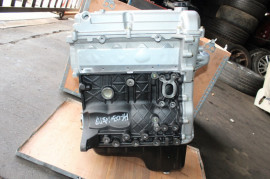Comprehensive Review of a Subcompact Automobile's Powertrain Capabilities
In the world of auto engineering, the powertrain of a subcompact automobile stands as a vital nexus where technology, performance, and effectiveness merge. From the engine's relentless search of ideal efficiency to the transmission's smooth choreography of power circulation, every element plays a vital duty in specifying the total driving experience.
Engine Performance Evaluation
In analyzing the engine efficiency of the subcompact vehicle, a comprehensive analysis reveals its effectiveness and power output under various driving problems. The subcompact vehicle's engine, an important component of its powertrain system, shows commendable efficiency metrics. The engine's efficiency is notable, as it maximizes gas intake without endangering power distribution. Under regular driving conditions, the engine runs efficiently, showcasing a balance between efficiency and gas economic situation.
Additionally, when subjected to extensive testing circumstances such as high-speed acceleration or uphill climbs, the engine demonstrates durability and responsiveness. Its power outcome continues to be regular, giving ample acceleration when needed. The subcompact vehicle's engine is tailored to satisfy the demands of metropolitan driving, where fast velocity and active ability to move are vital.
Moreover, the engine's design includes modern-day innovations that boost its performance characteristics. Features like turbocharging or variable valve timing contribute to improved power distribution and torque, boosting the general driving experience. Finally, the engine efficiency of the subcompact car highlights its capability to provide trusted and effective power output across various driving conditions.
Transmission Effectiveness Analysis
Analyzing the subcompact car's transmission performance involves evaluating its efficiency in transferring power perfectly across numerous driving problems. The effectiveness of a transmission system is crucial as it straight impacts the general performance and gas economy of the car. In reviewing transmission performance, variables such as gear ratios, shift timing, and the smoothness of gear modifications are thought about. A properly designed transmission system must properly provide power from the engine to the wheels while minimizing energy losses.
One common technique used to evaluate transmission efficiency is with dynamometer testing, where the power result from the engine is gauged at the input and result shafts of the transmission. By analyzing these aspects, engineers can identify areas for enhancement and maximize the transmission system for much better overall efficiency and performance.
Gas Efficiency Assessment
The assessment of the subcompact vehicle's fuel efficiency entails a thorough analysis of its usage prices under different driving conditions. Gas performance is an important variable in examining the total performance and cost-effectiveness of an automobile. By determining the quantity of fuel taken in per device range took a trip, normally shared as miles per gallon (MPG) or liters per 100 kilometers (L/100 kilometres), the performance of the subcompact auto's powertrain can be identified.

In addition, innovations in modern technology, such as hybrid systems, regenerative braking, and automatic start-stop systems, have actually substantially enhanced fuel performance in modern subcompact vehicles. Producers remain to optimize and introduce powertrain elements to boost fuel effectiveness while fulfilling performance demands and environmental laws. Reviewing a subcompact auto's fuel effectiveness supplies useful understandings for customers looking for sustainable and affordable transport services.
Velocity and Handling Assessment
An integral facet of examining the performance abilities of a subcompact automobile depends on examining click this link its acceleration and dealing with attributes. Velocity is vital as it establishes just how rapidly wikipedia reference the car can reach preferred speeds, influencing overall driving experience and maneuverability in different website traffic conditions. opel corsa engine. Subcompact autos are frequently favored for their nimbleness and agility, making acceleration from standstill and during overtaking maneuvers vital aspects to consider
When it comes to taking care of, a subcompact cars and truck's ability to navigate edges, preserve stability at broadband, and supply a responsive guiding feeling are paramount. Tight city streets and winding roadways require accurate taking care of to guarantee vehicle driver confidence and safety. Aspects such as suspension adjusting, weight distribution, and tire hold play substantial duties in identifying a subcompact auto's overall handling prowess.

Powertrain Elements Review
Upon delving into the complexities of a subcompact car's performance, a thorough assessment of its powertrain parts is essential to understand the car's mechanical underpinnings. The powertrain of a subcompact vehicle normally contains the engine, transmission, driveshaft, differential, and axles. The engine, usually a smaller sized displacement four-cylinder in a subcompact cars and truck, is responsible for creating power by burning fuel and transforming the energy right into mechanical force. The transmission, whether manual or automatic, transfers this power to the wheels through the driveshaft. The differential allows the wheels to rotate at different speeds when transforming, boosting maneuverability. Moreover, the axles send power from the differential to the wheels, enabling activity. Comprehending exactly how these parts interact is vital in assessing a subcompact automobile's total efficiency, efficiency, and driving internet characteristics. In the next section, we will delve deeper into the details duties and communications of each powertrain part to offer a thorough review of a subcompact auto's powertrain capabilities.
Final Thought
Finally, the subcompact cars and truck's powertrain capacities have been completely evaluated in terms of engine performance, transmission effectiveness, fuel velocity, efficiency, and handling. The comprehensive evaluation highlights the importance of each element interacting seamlessly to provide optimum performance. Overall, the powertrain elements of the subcompact car have been located to be reliable and healthy, making it a reliable choice for chauffeurs looking for a portable and fuel-efficient car.
In the world of automotive design, the powertrain of a subcompact car stands as an important nexus where technology, efficiency, and efficiency converge.In assessing the engine performance of the subcompact vehicle, an extensive evaluation discloses its efficiency and power output under different driving problems.Analyzing the subcompact cars and truck's transmission performance includes evaluating its performance in transmitting power seamlessly across different driving problems. Understanding how these components function together is crucial in assessing a subcompact car's overall efficiency, efficiency, and driving dynamics.In final thought, the subcompact auto's powertrain capabilities have actually been completely evaluated in terms of engine performance, transmission performance, fuel handling, acceleration, and performance.